Seagrass Meadows as Fish Nurseries: Deep Dive for Middle School Science (Inspired by Mote Marine Research)
- Caleb Mullenix
- 14 hours ago
- 5 min read
Picture yourself floating above an underwater meadow in the crystal-clear waters of the Florida Keys, watching thousands of juvenile fish dart between swaying grass blades. These aren't ordinary meadows: they're seagrass beds, serving as some of the ocean's most critical nurseries. Understanding how these marine ecosystems function as fish nurseries represents essential knowledge for any middle school scientist ready to explore marine biology.
What Makes Seagrass Meadows Nature's Perfect Nurseries?
Seagrass meadows differ fundamentally from seaweed or kelp forests. These underwater flowering plants: the only flowering plants fully adapted for marine life: create complex three-dimensional structures that provide ideal conditions for juvenile fish development. The grass blades form dense canopies that offer protection from predators while creating feeding grounds rich in small invertebrates and organic matter.
Research conducted by marine scientists reveals that seagrass meadows support over one-fifth of the world's largest 25 fisheries, including commercially vital species like Walleye Pollock. In Florida waters, species such as snapper, grouper, and tarpon depend on seagrass nurseries during their early life stages. The structural complexity of these habitats allows young fish to hide from predators while accessing abundant food sources necessary for rapid growth.
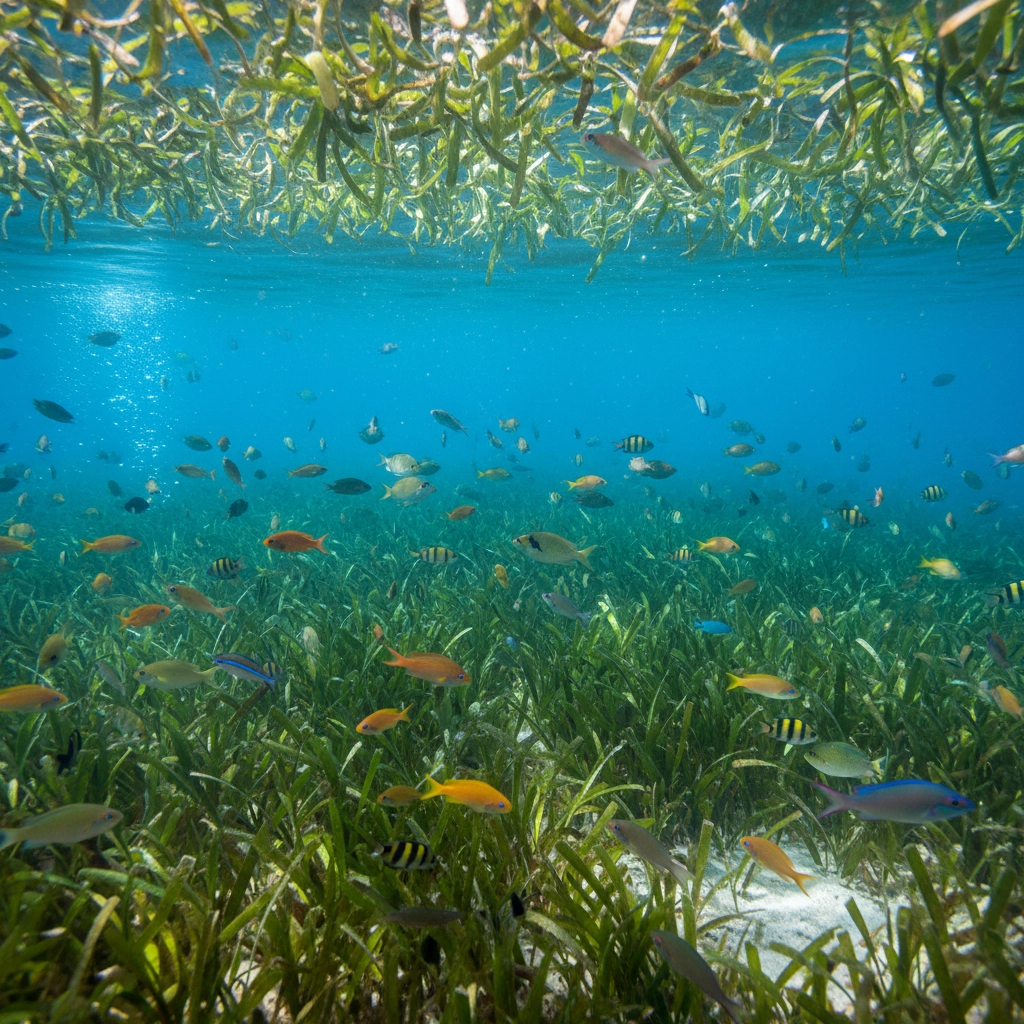
Revolutionary Research Methods: Environmental DNA Detection
Scientists at institutions like UCLA and Mote Marine Laboratory employ groundbreaking techniques to study seagrass biodiversity. Environmental DNA (eDNA) sampling allows researchers to identify fish species present in seagrass beds without disturbing the ecosystem. By collecting water samples and analyzing genetic material shed by fish through scales, mucus, and waste, scientists can detect species that traditional observation methods might miss.
This innovative approach revealed 78 different fish species thriving in Southern California seagrass beds, demonstrating the incredible biodiversity these habitats support. Students participating in Appleseed Expeditions' Florida Keys programs can observe similar eDNA sampling techniques firsthand, learning how modern technology revolutionizes marine research.
Geographic Variations and Microhabitat Diversity
Seagrass meadows in different locations support distinctly different fish communities, even when situated relatively close to each other. Protected bay seagrass beds host species adapted to calm, shallow waters: including juvenile parrotfish, wrasses, and gobies. In contrast, seagrass meadows along exposed coastlines support species that typically inhabit open ocean environments.
Research from Japan's Urasoko Bay demonstrates that when small coral colonies exist within seagrass beds, they create unique microhabitats supporting even greater fish diversity. Some species only appear when both seagrass and coral are present, highlighting the importance of habitat complexity in supporting marine biodiversity.
Students exploring seagrass beds during Appleseed Expeditions field studies can directly observe these differences by comparing fish communities in various Florida Keys locations, from protected backcountry areas to oceanside grass flats.
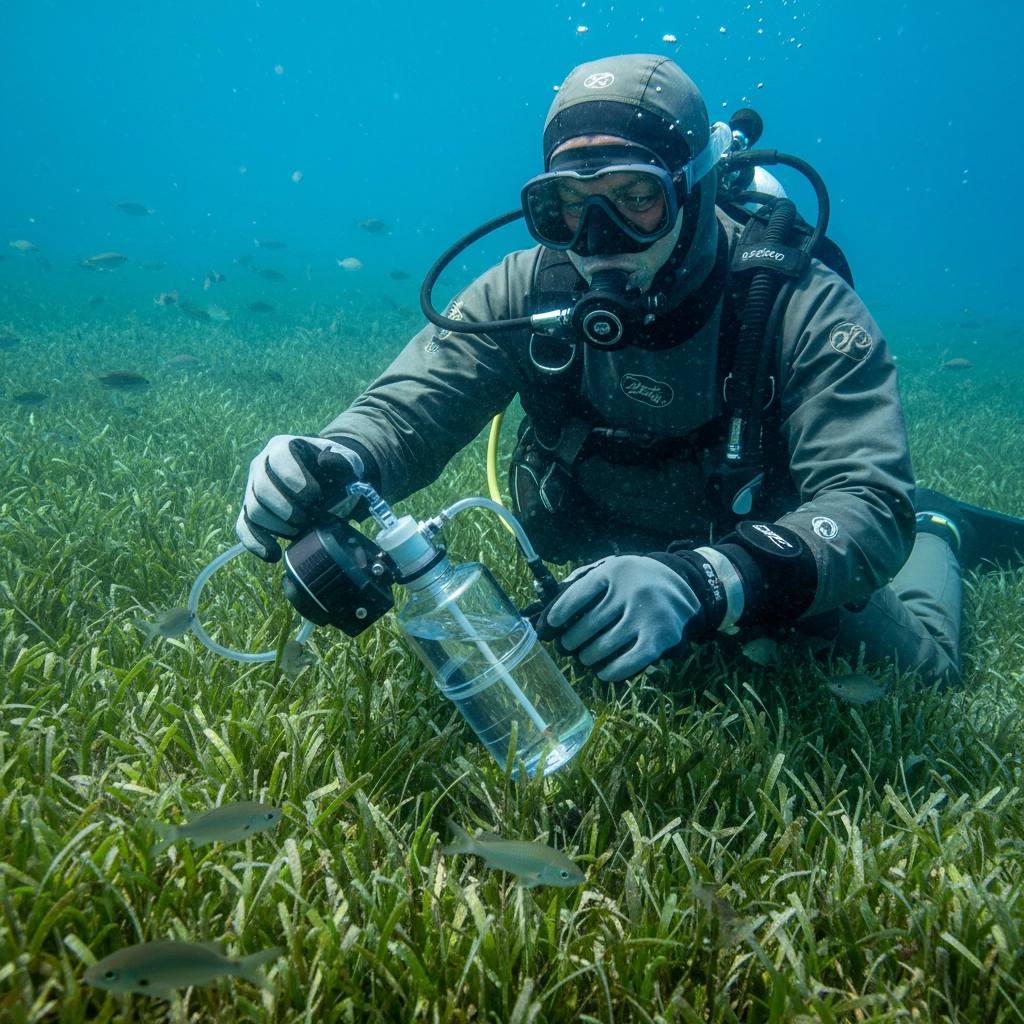
Deep-Water Seagrass: Hidden Nursery Habitats
Recent discoveries reveal that seagrass meadows extend far beyond shallow coastal waters. Deep-water seagrass beds, previously overlooked by researchers, serve as crucial nursery habitats for species rarely found in shallow waters. Juvenile lethrinids and siganids: important reef fish families: depend specifically on these deeper seagrass environments.
Deep-water seagrass meadows possess unique advantages for conservation. Their depth provides resilience against surface disturbances like storms, while their distance from shore protects them from land-based pollution and human activities. These discoveries emphasize the importance of protecting seagrass habitats across all depths and locations.
Hands-On Research Opportunities for Students
Understanding seagrass ecology requires direct observation and data collection. During Appleseed Expeditions programs, middle school students can conduct authentic scientific research using professional techniques:
Fish Survey Methods: Students learn to identify fish species using underwater observation techniques, recording species abundance and diversity data in different seagrass habitats.
Habitat Assessment: Teams measure seagrass blade density, height, and coverage while documenting environmental conditions like water depth, temperature, and clarity.
Comparative Analysis: Groups compare fish communities between different seagrass bed locations, analyzing factors that influence species composition and abundance.
Data Recording: Students practice proper scientific documentation, creating field notebooks and data sheets that mirror professional research protocols.
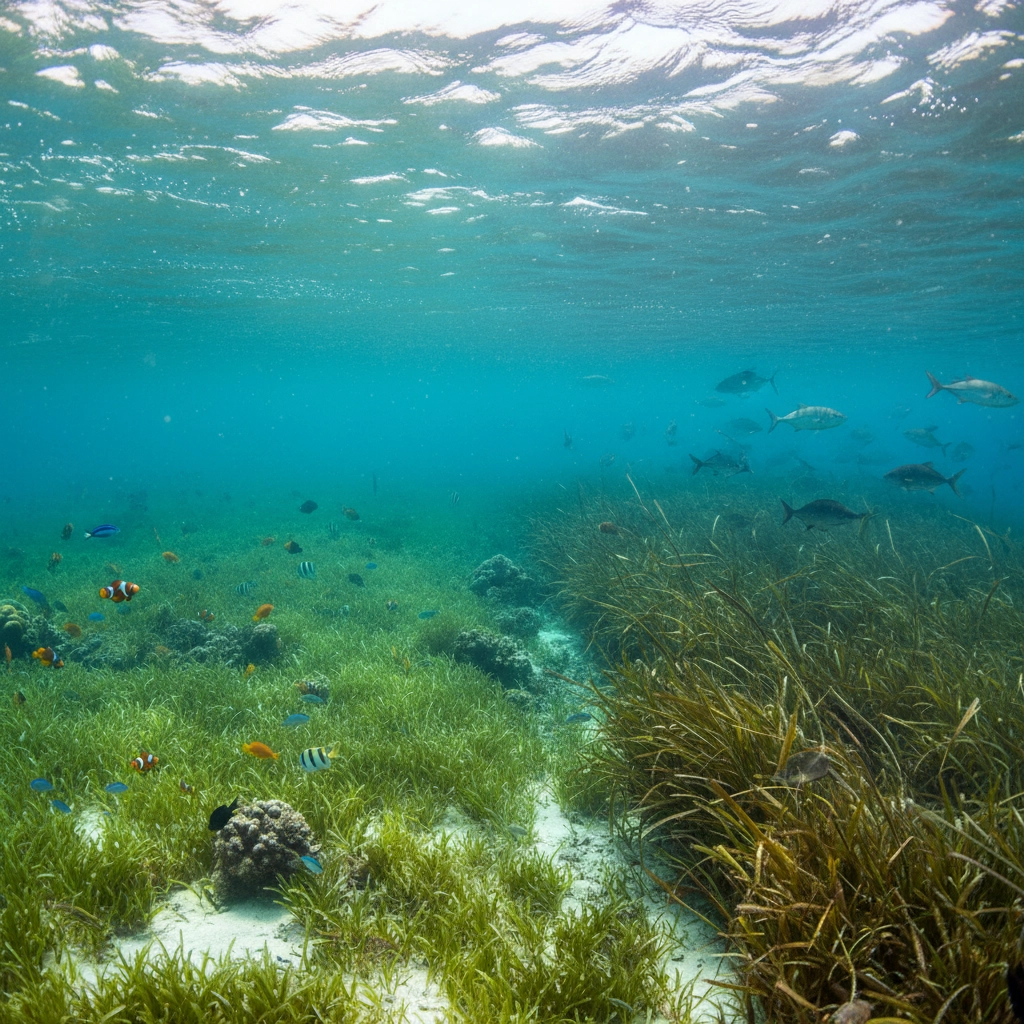
Critical Threats Facing Seagrass Ecosystems
Seagrass meadows face unprecedented challenges that directly impact their function as fish nurseries. Approximately one-third of global seagrass coverage has disappeared since 1879, representing a massive loss of nursery habitat for marine species.
Multiple stressors threaten seagrass health:
Climate-Related Impacts: Rising water temperatures, marine heat waves, and changing precipitation patterns stress seagrass plants and alter their growth patterns.
Pollution Effects: Nutrient over-enrichment from agricultural runoff and sewage causes algae blooms that block sunlight essential for seagrass photosynthesis.
Physical Disturbances: Boat propellers, anchoring, and coastal development directly damage seagrass beds and fragment nursery habitats.
Water Quality Issues: Increased turbidity, hypersalinity, and low oxygen levels create conditions unsuitable for seagrass survival.
Mote Marine Laboratory's Restoration Innovations
Mote Marine Laboratory leads groundbreaking seagrass restoration efforts throughout Florida, developing techniques that can restore damaged nursery habitats. Scientists establish multiple seagrass nurseries with different populations separated by location and genetic variation, testing which varieties show greatest resilience to environmental stressors.
Genetic analysis reveals that seagrass populations from different areas possess unique adaptations to local conditions. By understanding these genetic differences, researchers can select the most appropriate seagrass varieties for restoration projects in specific locations, improving success rates significantly.
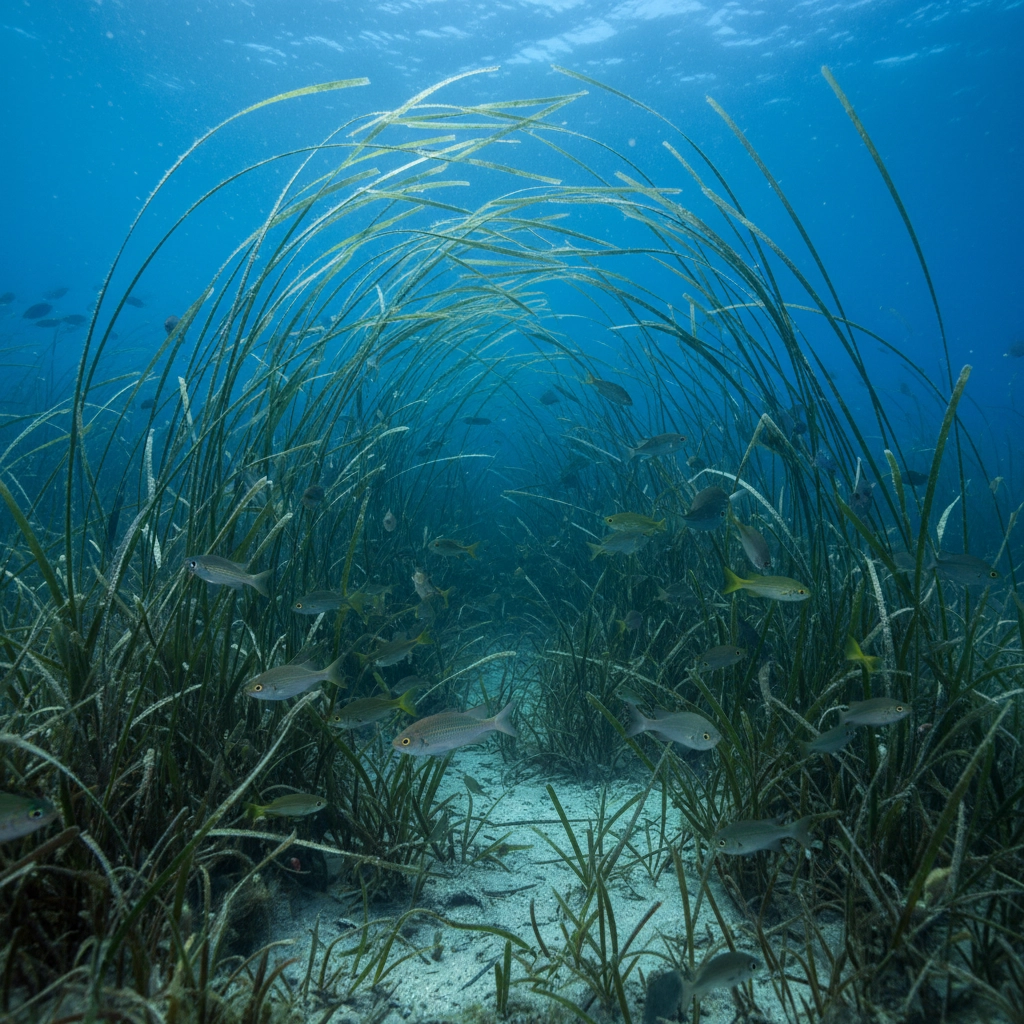
Conservation Success Stories
Restoration efforts demonstrate remarkable success when implemented properly. Studies show that restored seagrass meadows can quickly resume their function as fish nurseries, supporting biodiversity levels comparable to natural habitats within just a few years.
Long-term monitoring reveals that even meadows absent for decades can be successfully restored using appropriate techniques and genetic varieties. Fish populations respond rapidly to habitat restoration, with juvenile abundance increasing dramatically in newly established seagrass areas.
Career Connections in Marine Conservation
Students interested in seagrass research and marine conservation can explore numerous career pathways:
Marine Biology: Researchers study seagrass ecology, fish communities, and ecosystem interactions using field and laboratory techniques.
Conservation Science: Scientists develop and implement restoration strategies, monitor ecosystem health, and evaluate conservation success.
Environmental Education: Educators teach others about marine ecosystems and inspire conservation action through field programs and classroom instruction.
Aquaculture and Fisheries: Professionals manage fish populations and develop sustainable practices that protect critical nursery habitats.
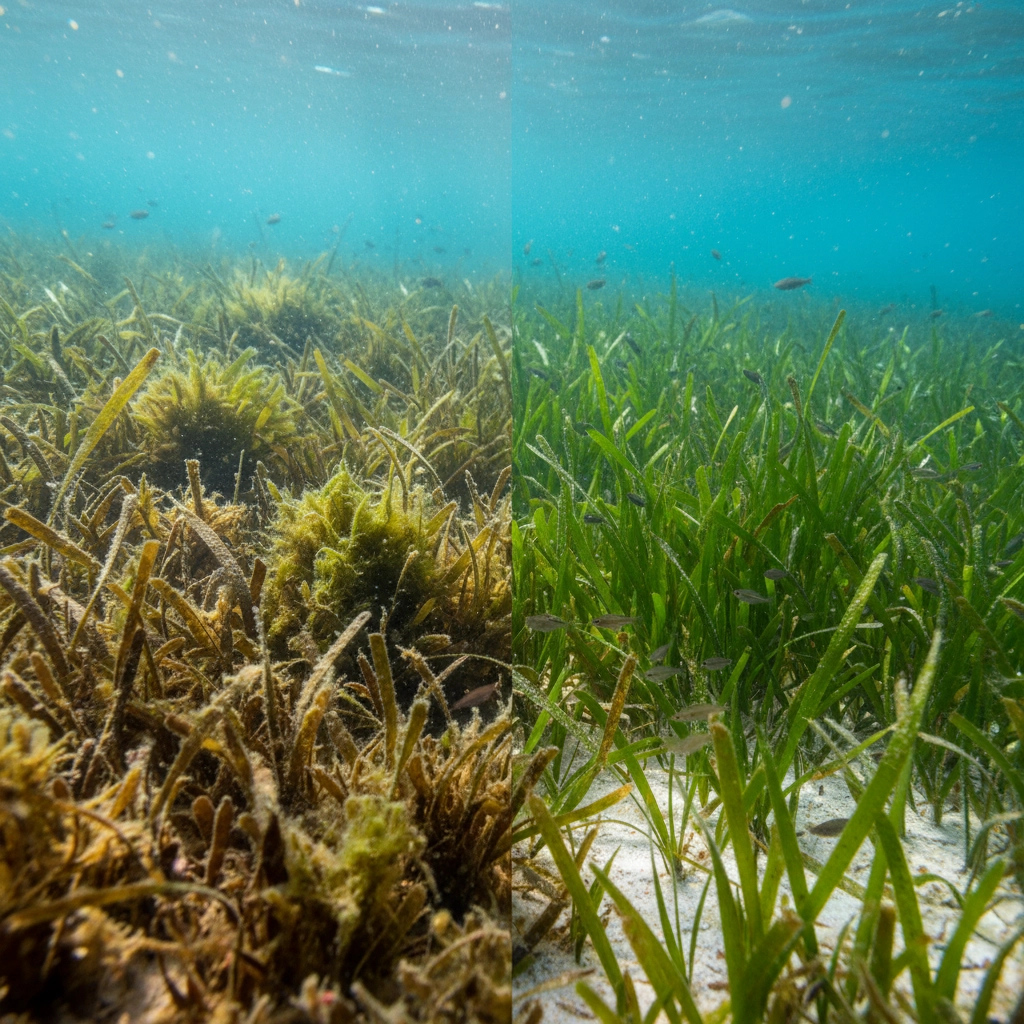
Taking Action Through Education
Understanding seagrass meadows as fish nurseries empowers students to become effective ocean advocates. Through direct field experience with organizations like Appleseed Expeditions, middle school scientists gain firsthand knowledge of these critical ecosystems and develop skills necessary for marine conservation careers.
Students who participate in authentic research experiences develop deeper understanding of scientific methods while contributing to actual conservation efforts. This combination of hands-on learning and real-world application creates passionate, knowledgeable advocates for marine ecosystem protection.
Seagrass meadows represent one of nature's most efficient systems: relatively small areas supporting enormous biodiversity and providing nurseries for fish species worth billions to global fisheries. By studying these underwater meadows and understanding their critical role as fish nurseries, students gain essential knowledge for protecting ocean ecosystems and ensuring sustainable marine resources for future generations.
The future of our oceans depends on the next generation of marine scientists and conservationists. Through comprehensive field education and hands-on research experience, today's middle school students become tomorrow's ocean protectors, equipped with the knowledge and passion necessary to preserve these vital nursery habitats for countless marine species.



Comments